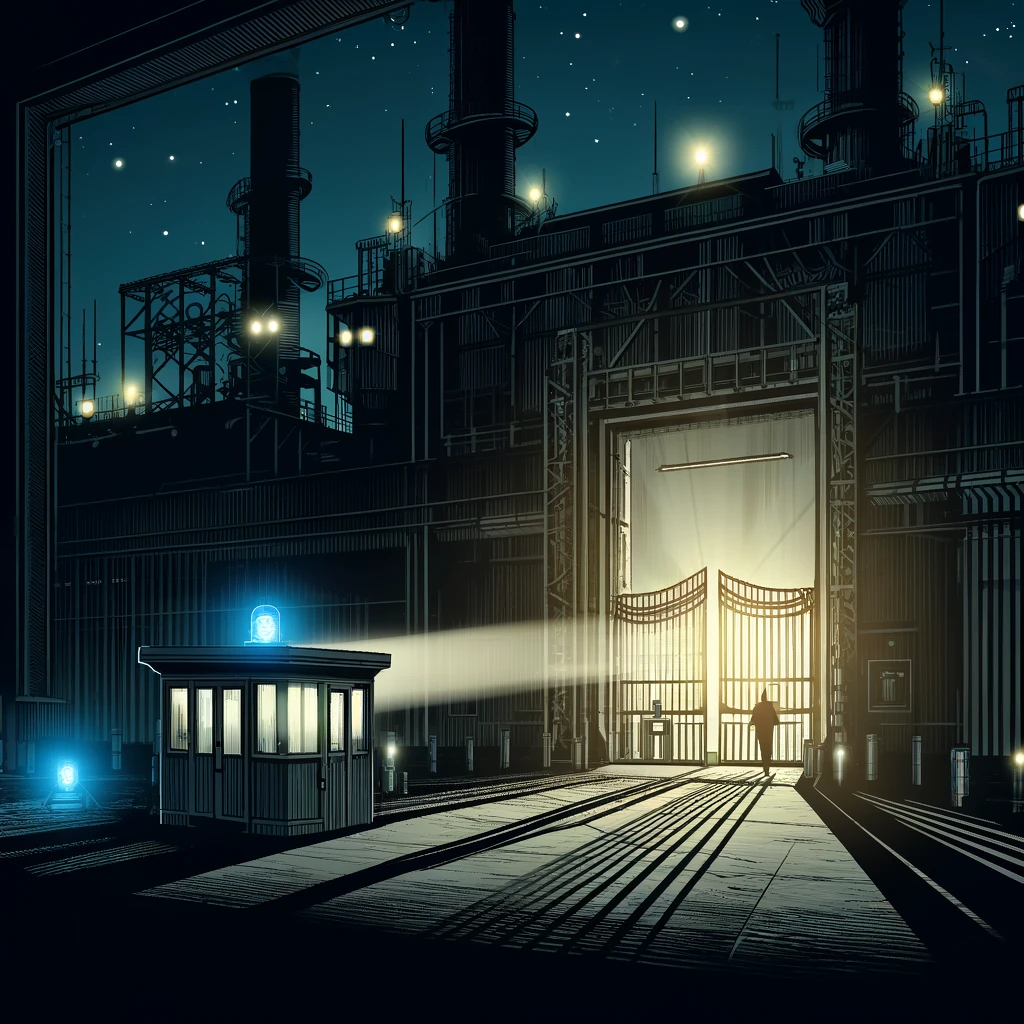
As dawn breaks over the power plant, a chill morning breeze stirs the leaves around the main gate, now strangely ajar. This gate, a sentinel of iron and steel, stands uncharacteristically unlocked—not by force, but by oversight, or perhaps by design. As you arrive on the scene, your eyes catch a glint of something unusual nestled against the gatepost: a business card for "Covert Threat". You recognize the name as a security firm that does assessments.
With the card in hand, the initial suspicion is unavoidable. "Covert Threat"—the name itself a harbinger of hidden dangers, now linked to the unexpected power outage that has left the plant crippled. Could they have intentionally pushed beyond a mere test? The thought lingers as you push forward into the heart of the plant.
As you make your way into the plant, the air is tense, filled with the low hum of emergency power. The usually bustling facility is subdued, with consoles and monitors dimmed, awaiting your investigation. As you pull up the surveillance footage from the previous night, you get confirmation of your suspicions. The footage reveals the gate casually left unlocked after a routine maintenance shift. No signs of forced entry, no lurking figures—just the quiet night and an open gate.
Your investigation deepens. Driven by the insidious possibility that "Covert Threat" may have orchestrated more than a routine test, you scrutinize their past operations. Known for their stringent but fair assessments, nothing in their history suggests a capability or intent to cause real harm. Yet, the timing of their card, their recent presence—it all seems too coincidental.
Compelled to find a link, you examine the plant’s system logs and operational data, tracing the pathways and protocols affected during the outage. The deeper you delve, the more the pieces fail to align perfectly with the theory of sabotage. Instead, you uncover critical maintenance oversights—a failed system here, a delayed update there—each a small but innocent cog in the machinery of failure.
As you compile your thoughts, the narrative feels muddled. The mundane truths of mechanical failure and human error still beg questions – you know from experience that sometimes the simplest explanation is often the right one. Still, the evidence reads like a thriller, where every fact is tinged with doubt, every conclusion a question mark.
Question 1:
How do we proceed with fortifying our defenses, not only against tangible failures but against the potential shadows cast by our own protectors?
[accordions]
[accordion title="Clue"]
Clue 1: Talk to Rada Asaad or Chuck Durham at the Covert Threat booth, they may know crucial details about the breach.[/accordion]
[/accordions]
[button-coop title="Next%20Section" link="%2Fconferences-education%2Fmeetings%2FCo-op-Cyber-Tech%2FPages%2FThe-Security-Office.aspx" /]
CTF sponsored by:
[row center middle]
[column 4]

[/column]
[column 4]

[/column]
[column 4]

[/column]
[/row]
[row center middle]
[column 4]

[/column]
[column 4]

[/column]
[/row]
